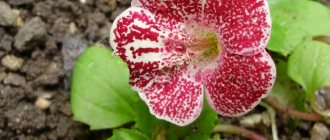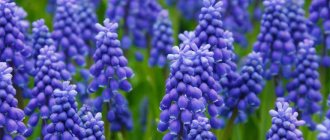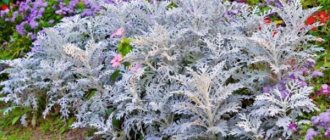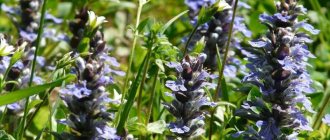Decorative leaves of cineraria, covered with silvery pubescence, create the impression of icing. These spectacular shrubs make excellent compositions with other plants. The article describes in detail the silver cineraria plant - planting and care, presents photos in the garden, tells how to properly grow it in a summer cottage and on a balcony, how it can overwinter, and how to propagate it.
Description of the plant
Cineraria are herbs or shrubs from the Asteraceae family. Some plants from the genus Raspberry are called cineraria.
The most popular species in our gardens is Cineraria silver. More recently, these plants have been transferred to another genus, so there is often confusion in the names. Currently, silver cineraria is classified in the genus Jacobea (Jacobaea), the Asteraceae family. And if earlier its name was Senecio cineraria, today it belongs to a different genus and is called Jacobaea maritima. Despite these changes, the old name is still widely used and few people know the new name.
This species differs from others in its silvery pubescence, for which it received the name “silver”. Other names also popular:
- Ashy ragwort;
- Cineraria ashy;
- Silver cineraria;
- Cineraria;
- Cineraria maritima.
The homeland of Senecio cineraria is Southern Europe, where the plant found the best conditions for development in many areas. In nature, these are low shrubs 60-80 cm high, woody at the base, inhabiting rocky slopes. In our climatic conditions, ashthorn is often grown as a garden annual or perennial plant, if it is provided with conditions for wintering under a roof - in unheated basements with a window, a bright garage, an attic, stairwells.
Plant characteristics:
- In gardens, the ashtray reaches a height of 15-40 cm.
- The shoots are rigid, highly branched at the base, covered with silvery pubescence, and densely leafy. The pubescence protects the stems and leaves from sudden changes in temperature and excessive evaporation of water from the tissues.
- The leaves are pubescent, deeply dissected. The pubescence is soft, silky to the touch, and looks like winter frost. The lower leaves are located on petioles, the upper leaves are sessile, less dissected. On the underside of the leaf the pubescence is much denser than on the top. On older leaves, the pubescence becomes coarser, acquiring a greenish tint.
- Flowers. Small yellow, odorless flowers appear from July to September in the second year of cultivation, so cineraria rarely blooms in our climate. The flowers are collected in inflorescences-baskets, consisting of marginal reed flowers, and the inner ones - of tubular ones. The flowers are typical of the entire Aster family, with flower baskets resembling daisies with a diameter of 1.5 cm.
- The fruit is an achene.
Useful properties of cineraria
In addition to its attractive appearance, cineraria also has the ability to purify and ionize the air in the room where it is located. By absorbing toxic compounds and enriching the environment with oxygen and phytoorganic substances, the plant noticeably improves the microclimate of the home, which ultimately has a beneficial effect on the well-being of its owners.
Popular varieties
Low varieties of cineraria usually reach 30-40 cm in height and are most often found on sale, but there are varieties that grow up to 80 cm. It is worth paying attention to this when purchasing.
Interesting varieties of silver cineraria:
- "Candicans" Candicans - the variety grows up to 30 cm, excellent for flower beds and edging.
- "Silverdust" Silverdust is a popular low-growing variety with heavily pubescent leaves. Bushes quickly and has beautiful, matte leaves. It grows well and is distinguished by uniform silver coloring of the leaves.
- “Diamond” Diamond – grows larger than the Silverdust variety, to a height of 30-35 cm, not counting the peduncles. Produces characteristic, deeply lobed leaves with an impressive silvery color.
- “Alice” Alice is a low-growing ashthorn (30 cm).
- “Dusty Miller” Dusty Miller is a medium-growing variety (45 cm).
- "Cirrus" Cirrus is a variety with grayish leaves.
Requirements for planting site and soil
Cineraria is not too demanding, but for it to be truly beautiful, it needs to be provided with proper growing conditions.
The species requires planting in a sunny place; only in full sun do the bushes form silvery decorative pubescence.
In shaded areas, the color of the leaves will be green, which will make them less decorative. Ashtray is able to grow in fairly dry areas. Only after planting is it necessary to regularly water the seedlings to help them take root.
Ashgrass has low requirements and does well in any garden soil. However, if we want to grow it as a perennial, then we need to provide a fertile, permeable substrate.
The soil for cineraria should be:
- fertile;
- permeable;
- humus;
- with a neutral or slightly acidic pH (pH 6-7.3).
Application in design
Maritime (silver) cineraria helps create a favorable background for growing other colorful plants. Cool shades will look great against the background of its whitish foliage. However, orange, red, and yellow flowers also look advantageous next to neutral leaves. In independent compositions, silver varieties captivate with their discreet colors and laconic forms. Thanks to the openwork, the area is filled with an atmosphere of lightness and tranquility.
Cineraria in the landscape
In addition, the bushes can be planted in a row to frame a ridge or a full-fledged flower bed. Petunias and bright violas look great in combination with the crop. It is also planted with sage, marigolds and ageratum.
Planting, post-planting care
Planting date (when is it better to plant silver cineraria in open ground): from the beginning of April to the end of September.
Cineraria seedlings
Before planting cineraria, you need to prepare the site well: dig up, select weeds from the soil and add rotted compost to the soil, since the ashthorn loves fertile soils. We plant silver cineraria at a distance of 20 × 20 cm.
After planting, cineraria needs to be watered regularly for the first weeks.
When the seedlings acclimatize in a new place, it is worth cutting off the tops of their shoots so that the plants bloom better and become denser.
Picking rules
To ensure that the seedlings grow squat and strong, after germination the container is placed in a bright, cool place. The seedlings are kept for a week at a temperature of 17-18 °C, and then the temperature is again increased to 22-25 °C. When two true leaves appear on the plants, they are planted in separate cups or cassettes. Gardeners call this procedure picking.
In order not to damage the roots of the seedlings during transplantation, they are watered in advance and the soil is allowed to dry slightly. In this case, it will be possible to preserve the earthen lump surrounding the roots intact. On the day of the pick, prepare cups with soil and make a small depression in the center of each of them.
Then the seedling is carefully lifted with a teaspoon, a toothpick or a small spatula, removed from the ground and planted in a new container, buried down to the cotyledon leaves. The transplanted plant is carefully squeezed with your fingers in the root zone so that the soil adheres more tightly, and watered. Moisture will finally eliminate voids in the soil.
Osteospermum for seedlings: 5 useful tips for growing a flower
Growing and care
Watering
Young plants do not respond well to a lack of water, but older bushes have no problem withstanding short-term lack of soil moisture. However, the species does not tolerate heavy wet soils and excess water. In such conditions, fungal diseases quickly develop in adult plants. Ashtray grows best in a sunny place with a moderately moist substrate. During hot summers and prolonged drought, cineraria needs watering, but not much.
Overwintering indoor plants are watered moderately, periodically providing moisture to the dried substrate.
Fertilizers
Cineraria is fed after planting in the garden - natural fertilizers (vermicompost, compost) are added. From June to September, fertilize with liquid fertilizers intended for flowering plants, in accordance with the dosage indicated on the label. Fertilizers are applied to the soil. You can also feed cineraria with liquid foliar fertilizers (one leaf at a time).
Trimming
The plant owes its spectacular appearance to the silvery leaves that densely cover the shoots. Trimming the tips of the shoots helps the plant bloom and maintain its compact shape. In late autumn and spring, dried plants are removed.
In the second year of cultivation (July-August), ashthorn produces small, yellow flowers that are not very attractive. Therefore, it is better to remove them immediately so that the plant can focus on developing leaves rather than feeding flowers and creating seeds.
In the warmest areas, at favorable ambient temperatures (not lower than minus 12 degrees Celsius), ashtray can remain in winter flower beds in open ground. After winter, damaged aerial parts of overwintered cineraria should be cut off close to the ground, leaving only fresh side shoots (marked in red in the photo).
Ashtray responds well to pruning, even such radical pruning, so do not be afraid. After 2 weeks, fresh shoots will begin to appear.
Photo. Cineraria overwintered in open ground after heavy spring pruning. The subsequent photographs show lateral buds developed to varying degrees.
Plants that have been preserved in good condition can be trimmed more carefully - only the apical parts of the shoots.
The photo shows an ashtray that has not been damaged at all by frost. The photo on the left shows the state at the end of March, the photo on the right shows the state at the beginning of May.
Wintering
Cineraria is a perennial plant that, in the conditions of the Moscow region and the Middle Zone, is grown in open ground as an annual. When overwintered in protected conditions, flowers appear in the second year of cultivation.
Ashtray decorates garden beds until late autumn, withstands temperatures down to minus 12 degrees Celsius, and therefore cannot overwinter in most regions of Russia, with the exception of the southernmost ones. However, in the fall, when coleus and hostas have already lost their beauty, cineraria will continue to decorate the garden.
In regions with mild winters, plants are covered with agrofibre or mulched with compost, garden bark, and dry leaves. In spring, it is recommended to trim frozen, damaged shoots directly above the ground.
Wintering cineraria requires storing it in a cool room with a temperature of about +10 degrees Celsius, with access to light, for example, on a windowsill.
This can be an unheated room with windows - a staircase, attic, basement, garage. However, in subsequent years of cultivation, the shape of the plants changes, and the bushes no longer look so attractive. Therefore, the best solution is to sow seeds every year or buy ready-made seedlings.
Diseases and pests
Most often, cineraria is attacked by aphids, less often by thrips. Aphids appear on new growth, and aphid colonies quickly cause the tops of the plant to die and the leaves to curl. Pests also transmit viral diseases. The presence of aphids attracts ants to the flower beds, which eat the sweet juice secreted by the aphids.
Natural ways to get rid of pests are to grow protective plants - nasturtium, lavender, garden savory. Small accumulations of aphids can be washed off with water. In the event of a massive outbreak of pests, it is necessary to spray the plants with chemicals.
Ashtray is disease resistant. Only during humid summer can fungal diseases affect it - rust, alternaria.
Rust does not kill plants, but it does make them look very unsightly. A plant infected with rust should be removed from the flowerbed before it infects neighboring ones.
How to care for cineraria in a flower bed
I call silver cineraria “a flower for the lazy”, since it requires minimal care:
- Water the bushes only in dry summers. If it rains regularly and is not very hot, the cineraria will have enough natural precipitation.
- Feed with mineral fertilizers twice a month. It is better to use fertilizers for garden flowers, and, if you find them, specifically for decorative deciduous ones.
- Silver cineraria flowers have no decorative value, and they take away the plant’s strength. Therefore, they are needed immediately trim.
The photo shows cineraria in Siberia in November in a flower bed
That's all there is to caring for cineraria in the flowerbed. Just don’t forget to remove weeds, otherwise your flower garden won’t look very nice.
Reproduction
Cineraria propagates from seeds and cuttings.
Seeds
Most often, cineraria is propagated by seeds. This method is simple and cheap, requiring only a certain amount of time.
When to sow cineraria seeds for seedlings? Seeds for seedlings are sown in February-March for growing at home. Sowing should begin 10-15 weeks before planting in the ground.
Sowing seeds and growing seedlings:
- Seeds are sown in boxes filled with substrate intended for seedlings. You can also prepare the soil for sowing cineraria seeds yourself by mixing peat with river sand or perlite in a 1:1 ratio. You can also mix garden soil with sand or peat.
- To germinate, cineraria seeds need light, so they are not covered with soil, but gently pressed to the ground. The seeds are not capricious and germinate easily.
- After 2-3 true leaves appear, the seedlings are picked and planted in pots.
- The tops of seedlings that reach a height of 10 cm are broken off. Trimming the tops will allow the plant to bush well and form a beautiful shape.
- Before planting in open ground, cineraria seedlings need to be hardened off. To do this, the pot is taken outside first for 30-60 minutes on warm days, then the duration of hardening is gradually increased.
Cineraria seedlings are planted in open ground when the danger of frost has passed - in the second half of May, at a distance of 20 × 20 cm.
Cuttings
Cineraria cuttings can be taken from the mother plant at the end of March. Before planting the cuttings in a pot, dip them in a rooting agent, such as Kornevin. Root the cuttings in a moist substrate.
Suitable container
Any container 8-10 cm high is suitable for sowing cineraria. This could be a cake lid or a box of pastries, a tray left over after purchasing semi-finished products. It is necessary to make holes in the bottom of the container to drain excess water.
This can be done with a knife, nail, or soldering iron. To begin with, it is better to sow the seeds in a common container, so it will be easier to care for the seedlings, and you will need less space on the windowsill. Later, the seedlings are planted in separate cups or small pots.











